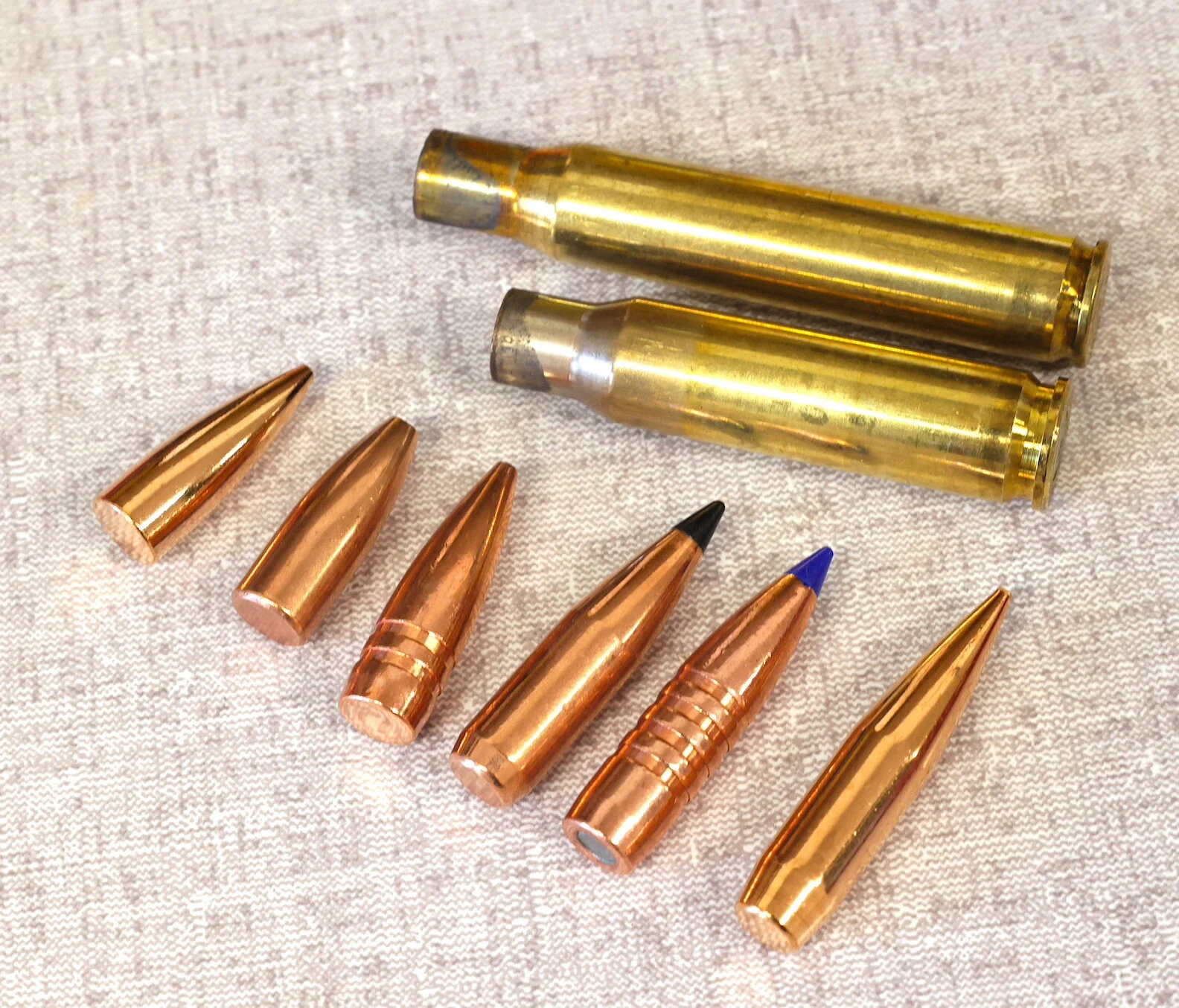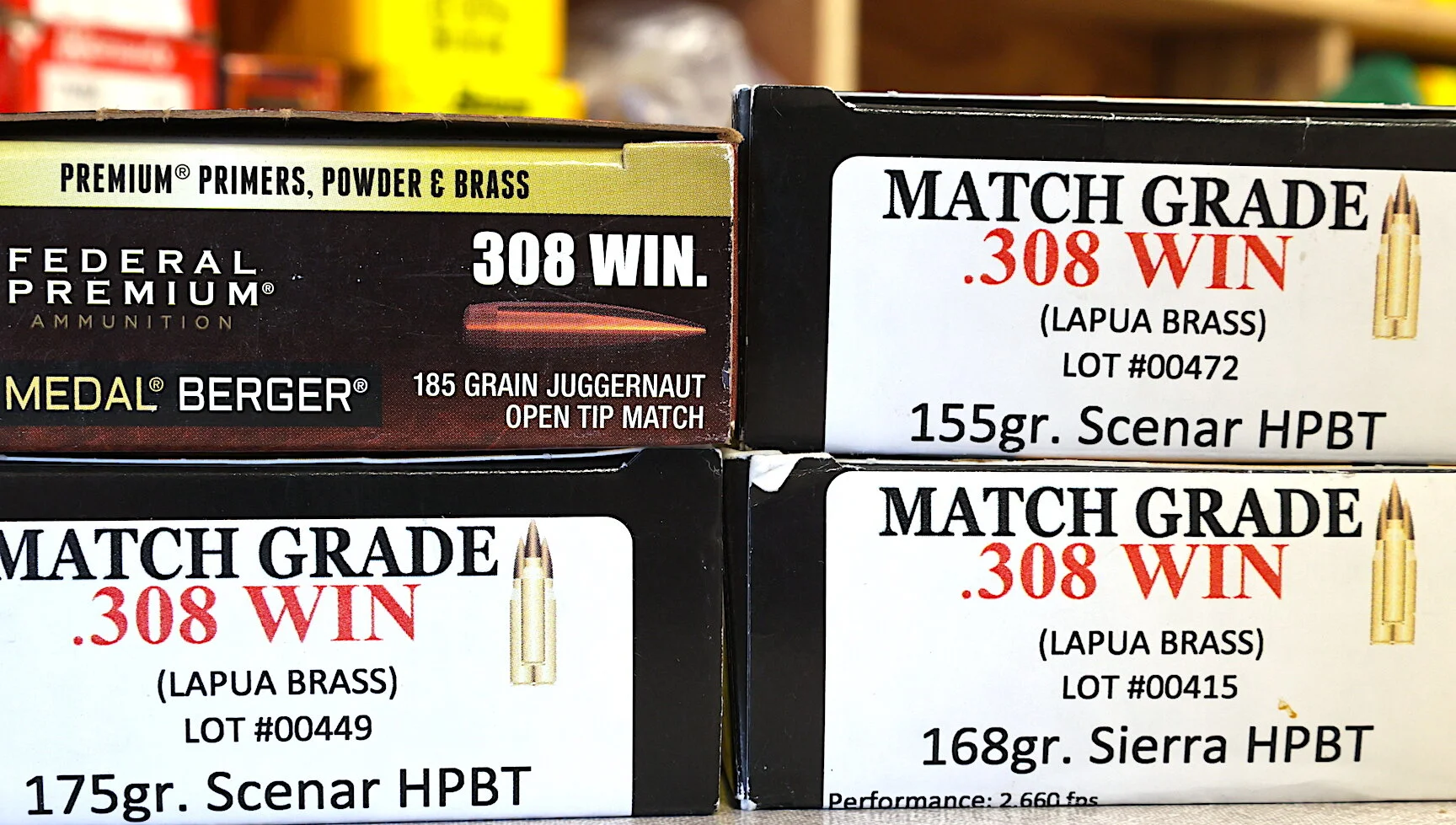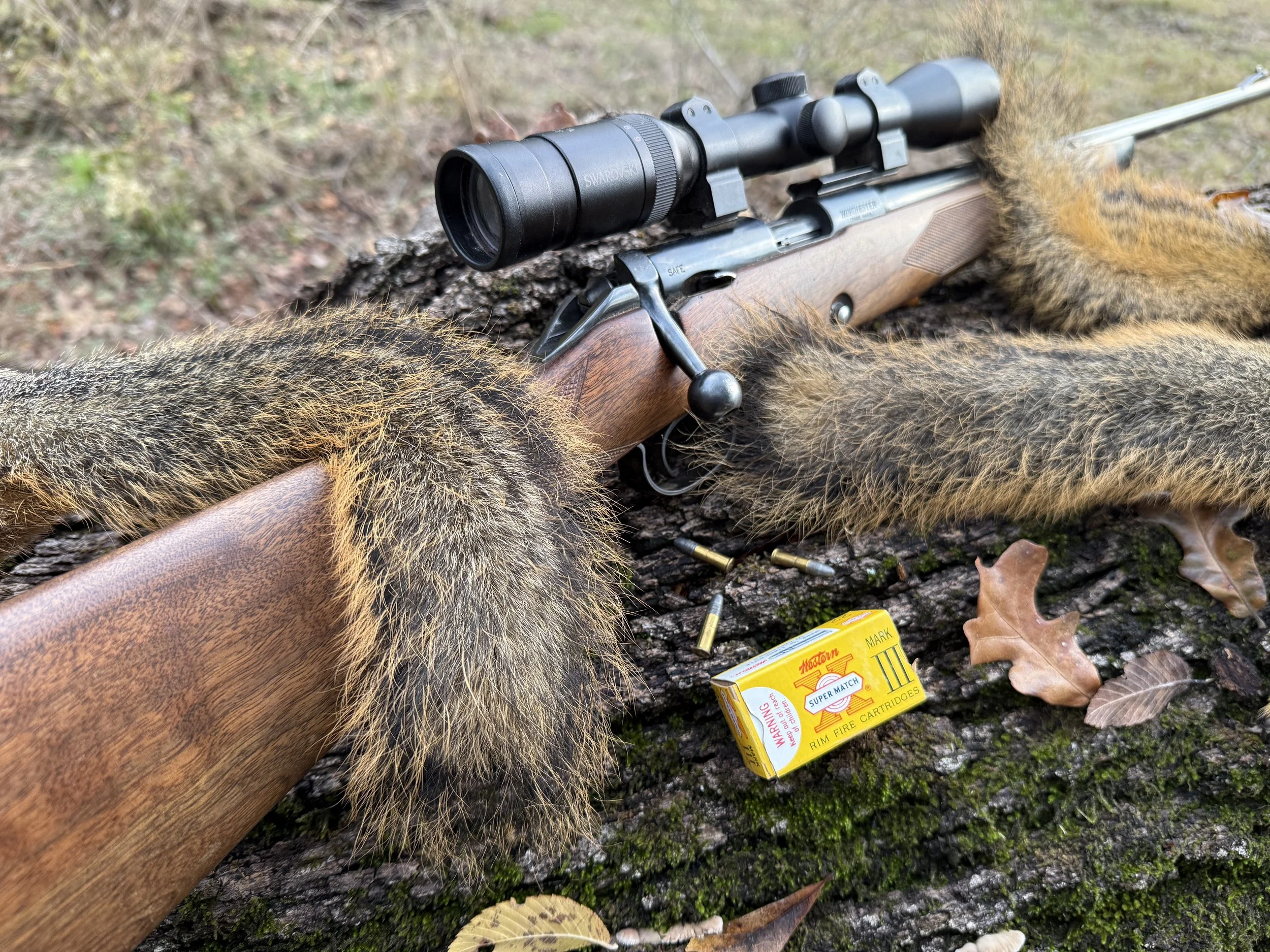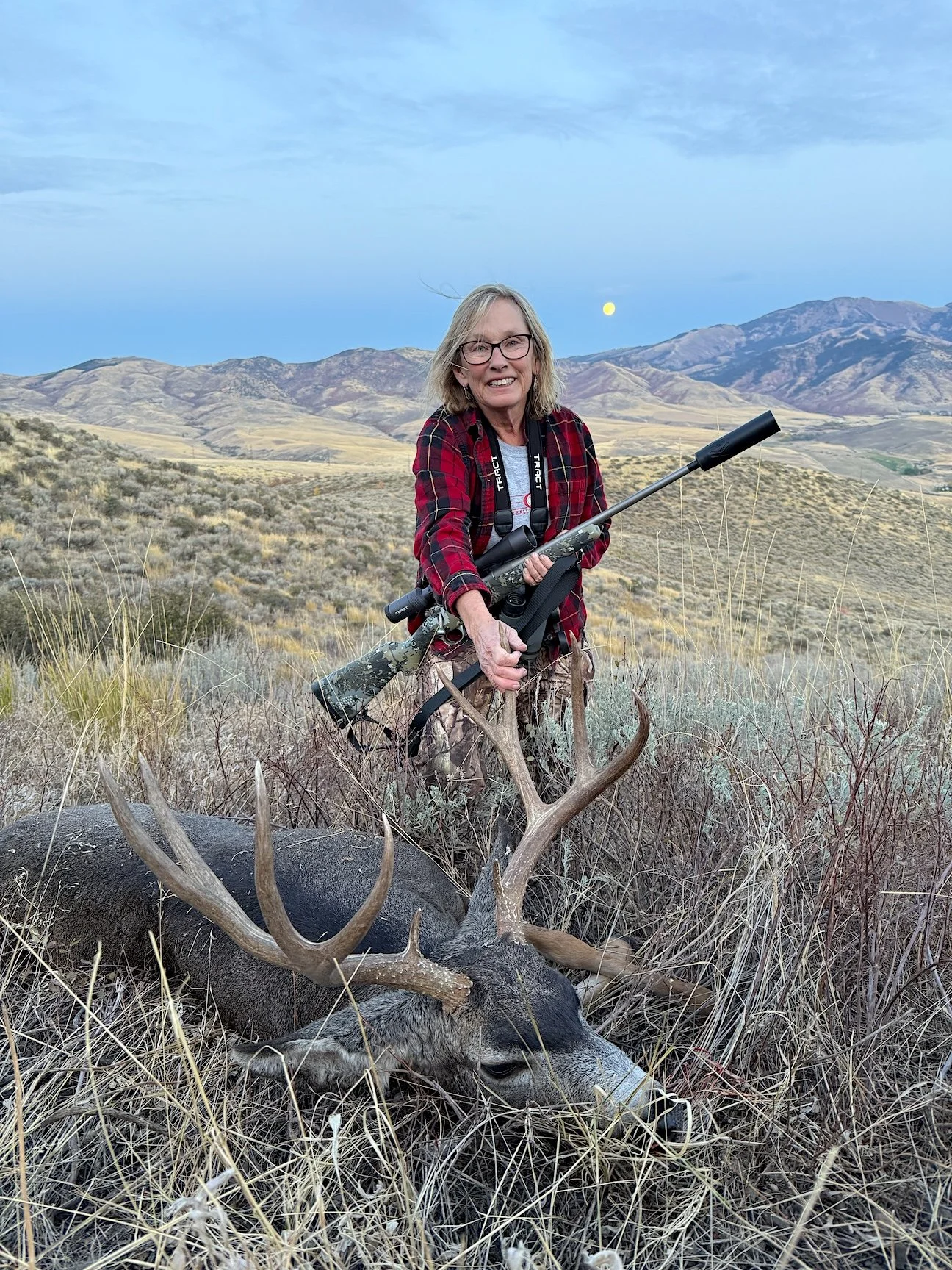Sorry, But The 308 Winchester is Not Equal to the 30-06
My articles and videos on the 308 Winchester continue to generate letters claiming the 308 Winchester is “equal to” or “better than” the 30-06. It’s time we nipped this myth in the bud before it becomes the shooters’ equivalent of an urban legend.
Believe it or not, 308 fans, I get it. I understand your enthusiasm for the 308 Win., as I outlined fully in a previous blog post. You may celebrate, revere, love, and fawn over the 308 Winchester for all its wonderful qualities, but the brutal reality is this: it is not the ballistic equal of the 30-06. Never has been. Never can be. Never will be.
Because size matters.
New powders can not make up the difference. New bullets can not change the outcome. New rifles matter not a whit. The 308 Winchester remains what it has always been: a 30-06 Short.
Here’s Where 308 Lovers Rip Me a New One
Okay, light up those keyboards and let the vitriol rip. The 308 sprang from the 300 Savage, not the 30-06! The 308 is rated for 2,000 psi more chamber pressure! The 308 is a short, super efficient case design that burns its powder more efficiently. The 308 is inherently more accurate and has won more benchrest and long range competitions than all the world’s 30-06s combined! The 308 can do anything the 30-06 can do in a short action rifle that is so much shorter and more compact and faster and better that most game animals simply stop and surrender when they know you’re carrying one. And… the 308 Winchester aka 7.62x51 NATO is an official US military cartridge that replaced the 30-06 so IT HAS TO BE BETTER.
The M14 U.S. Military infantry rifle in 308 Win/7.62 NATO was superseded by the M16 in 223 Rem. in less than a decade.
Military’s 308 Winchester Mistake?
Well, let’s get this military superiority claim out of the way first. The 308 Winchester/7.62x51 NATO cartridge walked a crooked line on its way to the U.S. M14 service rifle. It was created during the T65 project tasked with finding a replacement for the 30-06 Springfield. Some say the military wanted less bulk in service rifles and ammo, some say less recoil, more accuracy, or a need to function in autoloading rifles or machine guns. But this seems odd because WWII’s Garand is an auto-loader and the M1919 Machine Gun fired the 30-06.
Well, others say, they had to devise a cartridge all our NATO allies would accept. But the British had a ballistically superior 7mm round most NATO allies wanted, but our military brass and politicians threw their weight around and nixed that option. At any rate, while all the bureaucratic red tape played out, Winchester got the experimental T65 cartridge certified by SAAMI as the 308 Winchester and started stacking it on store shelves in 1952. NATO didn’t accept it until 1954. And our own military — who insisted the Brit’s 7mm wasn’t good enough — didn’t endorse the 7.62x51 NATO for US troops until 1957. I would appear we embraced it rather half-heartedly. My assumption is reinforced by the fact that just seven years later we threw it overboard for the little 5.56x45mm Ball cartridge M193. Yeah, the puny little 223 Remington displaced the wonderful 7.62x51 NATO after just seven years.
The 7.62x51 NATO did remain in inventory (still does, though it’s about to be replaced by something like the SigSauer .277 Fury) and was widely used in sniping rifle platforms and in the M60 machine gun. But the old 30-06 served well and honorably in bolt-action and autoloading platforms for 50 years and two world wars. Nevertheless, that doesn’t make it the ultimate winner anymore than the 308’s much shorter reign makes it the loser. Ballistic performance is the more important criteria. And there are dozens of cartridges with better ballistic performance than either of these 308s. That does not mean that these two are weak or ineffective military cartridges. Or even poor civilian cartridges. It just means that they are not vastly superior to many others just because a government agency (for all the usual convoluted procurement reasons) chose them. (There’s a reason the acronym SNAFU arose out of the military.)
The M1903 U.S. Military infantry rifle in 30-06 served in WWI. The cartridge continued delivery the goods through WWII in the Garand autoloading rifle. That doesn’t make it a perfect or even “best” cartridge. Cartridges are best judged by their ballistic performance.
Ballistic Reasoning On the 308 and 30-06
So, let’s forget the military excuse and get to the more pragmatic reasons why the 308 Winchester isn’t the same as the 30-06. It is rated 62,000 psi max chamber pressure while the poor 30-06 is saddled with 60,000 psi. That does give the 308 a slight edge in maximizing MV from available powder space, which is about 12 grains less than the 30-06 case can handle. One must remember that not all cases from various manufacturers have the same internal volume due to differences in wall thickness, sometimes even web thickness. Regardless, the reality is that the extra 12 grains or so of powder space in the 30-06 makes it possible, probable, and almost inevitable that it will push the same weight bullets as the 308 Winchester — but 100 to 200 fps faster. The 300 WSM holds about 10 grains more powder than the 30-06 and no one claims those two perform identically. Rumor has it that many handloaders, noting that the 270 Winchester is rated for and routinely loaded to 65,000 psi, push the 30-06 to that level, too. (I neither recommend nor condone doing this.)
Handloaders often push the safety envelope by stuffing the 308 Win. case with more powder than the loading manuals recommend. This does not make it the equal to the 30-06 — because loaders can push that envelope, too. Better safe than sorry. If you want more velocity than the 308 Win., get a 30-06. If you want more velocity than the -06, bet on a 300 Win. Mag. or WSM or RUM… There’s a reason all these 30-calibers were created.
While we’re on powder, let’s dispense with this idea that the 308 Win. can somehow use more modern, more “efficient” powders to gain an advantage over the 30-06. There is no exclusive, magical 308 Winchester powder. You can stuff the same powders into a 30-06 case. We have dozens of smokeless powders. They are chosen to optimize performance in a given volume with a given bullet weight and barrel length.
It is also true and often pointed out by 30-06 snobs that this longer case more efficiently handles bullets heavier than 180 grains, especially those in the 200- to 220-grain class. These make for superior penetration potential on such easy going game as grizzlies and brown bears. In fact, more than half of rifle manufacturers chamber 308 in 1:12 twist barrels, so stabilizing a 220-grain is unlikely at best. Give the versatility prize to the 30-06.
The 308 Winchester is best with lighter bullets. Once you go heavier than 165 grains or so, the 30-06 really starts showing it’s advantage. That’s a 210-grain Berger on the right, a discontinued 180-gr. Barnes MRX filled with tungsten — a great idea that should have stuck around. Given its density, a little tungsten goes a long way!
Is Faster Really Better? Or Even Faster?
The faster cycling speed of the short-action 308 is a red herring. In theory, yes. In practice, no. Personally I love the feel and function of a short-action, especially in a bolt-action, but I’ll need someone to show me some hard numbers before I’ll accept that its speed in pumping in a fresh round is functionally better than a 30-06. You can’t convince me anyone has failed to get his follow up shots off because he was running the bolt on a 30-06 instead of 308. Jerry Mikulek might be able to run a short-action faster than a long and still hit his targets, but the average hunter like me? Irrelevant.
That noted, it is not irrelevant if you simply prefer the feel and function of a short-action over a standard-length action. That is legitimate. But it doesn’t make the 308 Winchester cartridge superior to the 30-06. It just means that you, like me, appreciate the balance and function of a short action rifle.
Finally, the inherently accurate argument: I’ve stated in many articles and some videos that the 308s accuracy reputation is due to match-grade bullets, ammo, barrels, chambers, stocks, and all the other fine tuning that contributes to precision, not to some inherent magical shape of the case. I’ll concede that a certain length of powder column in relation to primer position and perhaps shoulder angle impacting powder burning can/might contribute a smigeon of inherent accuracy applicable to benchrest grouping, but imperceptible in field shooting/hunting. I’ll also not that the short action rifles in which the 308 Winchester is usually chambered are on average slightly stiffer, thus potentially more accurate than a longer action. Well-built 30-06 rifles and ammo routinely shoot sub-MOA, and a true MOA rifle will keep its bullets inside an 8-inch diameter circle at 800 yards, 3-inch circle at 300 yards. I don’t know about you, but if I don’t shake, wiggle, jiggle or flinch, I’m hitting my deer, pronghorn, and jackrabbit at all responsible hunting ranges with an MOA 30-06.
Notice the word “MATCH” on this 308 Win. ammo. You rarely see this on factory loaded 30-06 ammo. That’s a big part of the reason why the 308 often shoots tighter groups than the 30-06. This doesn’t mean the 308 Winchester case is somehow magically, inherently more accurate. It’s just more often carefully built/loaded to be superbly accurate. Ditto rifles.
Condemned to Hades
Now, before you condemn me to the lower levels of Hades for trashing the 308 Winchester, let me remind you of my previous position on this somewhat overhyped, misunderstood cartridge: while it is NOT the equal of a 30-06, it is close. Close enough for many of us. We’ll willingly forgo 100 to 150 fps in exchange for the compact balance of a short-action rifle. In the hands of an average or even above average field shot the 308 Winchester with the right bullets in the right place will terminate the same animals just as effectively as will the 30-06. I seriously doubt any deer, elk, moose, bear can tell which cartridge launched the bullet that struck him. A velocity difference of 100 to 200 fps is not nothing, but it’s not everything, either. Here are trajectory charts for each cartridge pushing the same bullet at their highest, safe MVs as reported in a Hornady 10 Edition handloading guide. It actually listed the 30-06 load at 2,950 fps, but this was from a 23 3/4-inch barrel, so I subtracted 50 fps to roughly equal 22-inch barrel used to measure the 308 load. Windage for both was 10 mph, full value.
30-06, 165-grain
308 Win, 165-grain
Notice that I zeroed both so peak trajectory was just a smidge higher than three inches at peak trajectory. That allows each to easily stay within the vital zone of most game if we use a center-of-chest hold. Notice also that, while both are throwing the same bullet at the safe top velocity, the “same as a 30-06” 308 drops 2 1/4-inches more at 300 yards, deflects about 2/3-inch more in the wind, and carries almost 200 f-p LESS energy. At 600-yards, what I consider the ragged edge of good long range performance for the 308 Win., the 30-06 has a 14-inch drop advantage, 3-inch drift advantage, and 200 f-p energy advantage. This isn’t a major difference, but it’s hardly the same performance.
If you love the look, feel and performance of a short-action rifle and have no intention of throwing .308 bullet heavier than about 190-grains, run with the 308 Winchester. If you want the last ounce of oomph and sometimes or predominately fling 190-grain and heavier bullets and don’t mind the extra half-inch of bolt travel to cycle a standard-length action, get a 30-06.
308 Winchester or 30-06 Springfield? It’s up to you. Pick your favorite and go enjoy. The game you hunt isn’t likely to know the difference.
Don’t Worry. Be Happy.
If you handload you can make either of these do most of what you’ll ever need a .308 to do — including going low and slow to minimize recoil and collect small game, varmints, or just plinking targets while honing your site acquisition and trigger control.
Both the 308 Winchester and 30-06 are American classics and fine all-round hunting cartridges. Make your choice and be happy. Just don’t buy into the myth that a cartridge with 12 grains less powder capacity is the equal of its bigger cousin. Size still matters.














